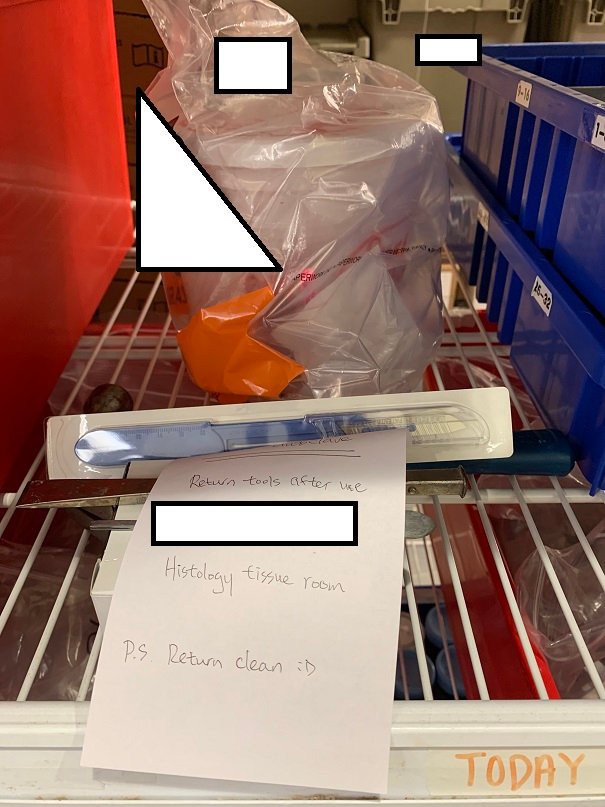Sometimes, the crew has to unconventional methods to get things done. Unless there is a good reason to reject a specimen, we try our best to make the culture work.
An amputation specimen arrived in the latter half of the graveyard shift. The microbiology order specified to culture the bone from the sample. That wasn't very specific. There was one other problem: it was an entire section of a leg. To be more specific, right below the knee. It was like a cut of pig hock from the market. The disposable scalpels and tissue grinders were not going to work. Not when the specimen was this large.
One of my colleagues approached me and asked for advice. I suggested that we ask the Histology Department for tools. Maybe they could even process the specimen for us. I offered to accompany him on the task.
When we were there, we explained the situation to their night crew. They offered tools to help our ventures. They declined to process the specimen because their workflow is non-sterile. It made sense because they put processed samples n formalin, which would destroy microbes we want to recover.

In the picture: a hammer (in the back), a chisel, a scalpel handle, and disposal scalpels and blades.
Once we have acquired the tools, the next step is sterilization. That required the use of the autoclave. Lucky for us, my department does operate one. We often sterilize instruments for other departments as well. Unfortunately for my crew, the autoclave wouldn't finish until after our shift. The least we could do was pass on the information.
The next day, I inquired about what happened to the specimen. I found out that our technical supervisor processed it, so it was in good hands. A part of me was a bit bummed that I didn't get the chance to use the hammer and chisel on a specimen. It would have been a unique experience.
Posted with STEMGeeks



